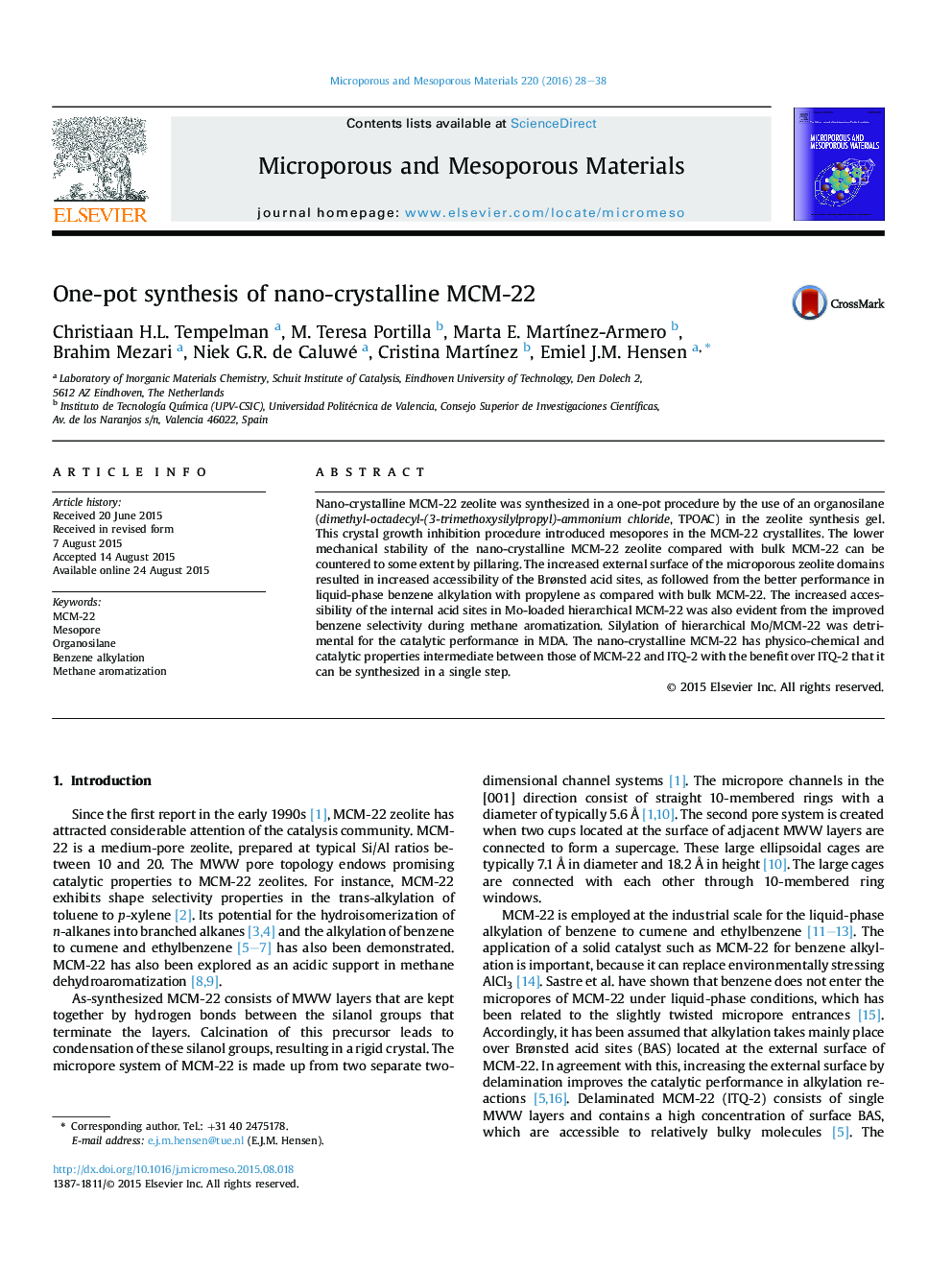| Article ID | Journal | Published Year | Pages | File Type |
|---|---|---|---|---|
| 72232 | Microporous and Mesoporous Materials | 2016 | 11 Pages |
•Nanocrystalline MCM-22 synthesized via a one-step synthesis procedure.•Organosilane decreases crystallite size.•Material with properties intermediate between MCM-22 and ITQ-2.•Improved performance in benzene alkylation.•Improved performance in methane dehydroaromatization
Nano-crystalline MCM-22 zeolite was synthesized in a one-pot procedure by the use of an organosilane (dimethyl-octadecyl-(3-trimethoxysilylpropyl)-ammonium chloride, TPOAC) in the zeolite synthesis gel. This crystal growth inhibition procedure introduced mesopores in the MCM-22 crystallites. The lower mechanical stability of the nano-crystalline MCM-22 zeolite compared with bulk MCM-22 can be countered to some extent by pillaring. The increased external surface of the microporous zeolite domains resulted in increased accessibility of the Brønsted acid sites, as followed from the better performance in liquid-phase benzene alkylation with propylene as compared with bulk MCM-22. The increased accessibility of the internal acid sites in Mo-loaded hierarchical MCM-22 was also evident from the improved benzene selectivity during methane aromatization. Silylation of hierarchical Mo/MCM-22 was detrimental for the catalytic performance in MDA. The nano-crystalline MCM-22 has physico-chemical and catalytic properties intermediate between those of MCM-22 and ITQ-2 with the benefit over ITQ-2 that it can be synthesized in a single step.
Graphical abstractFigure optionsDownload full-size imageDownload as PowerPoint slide
